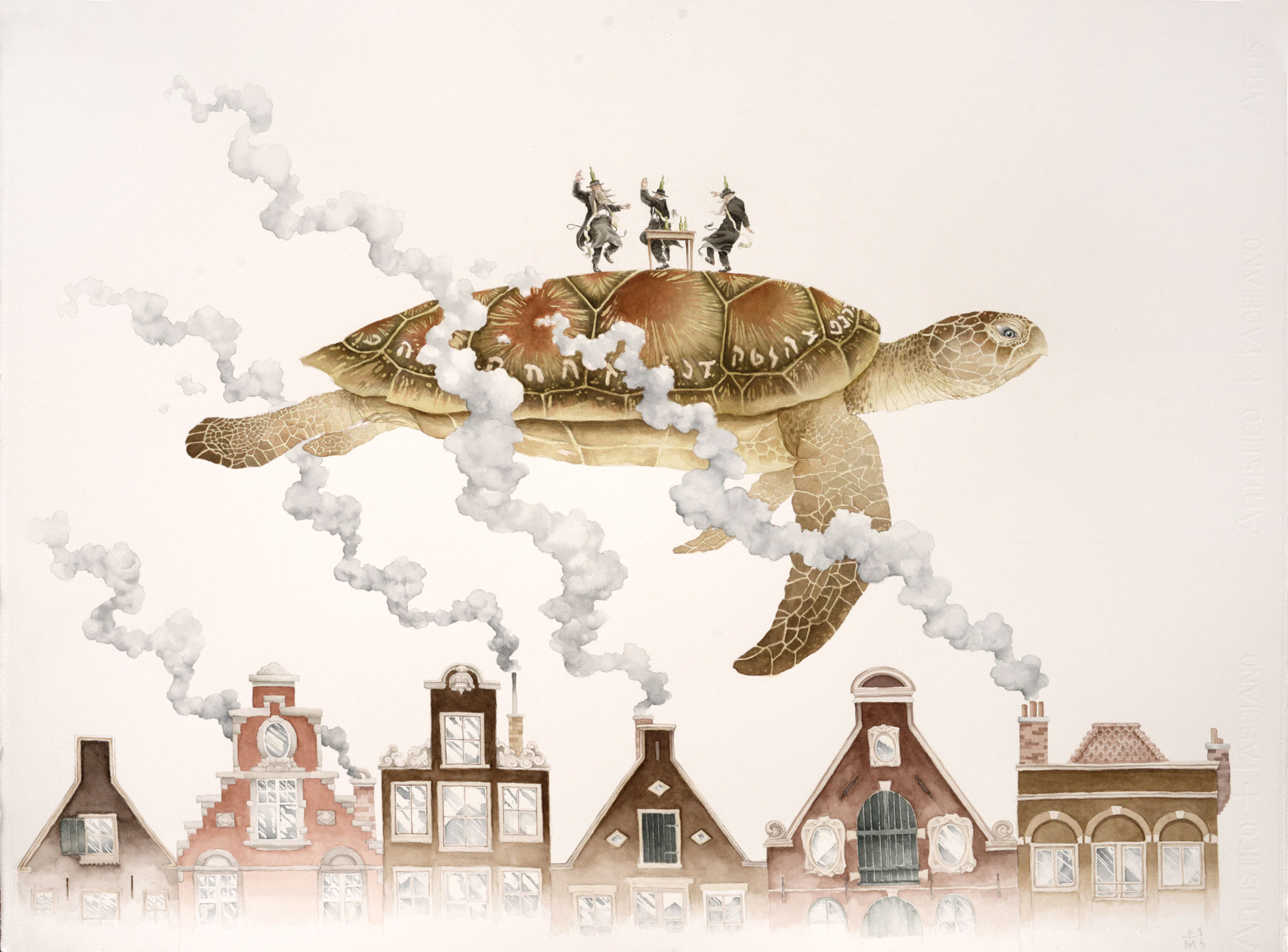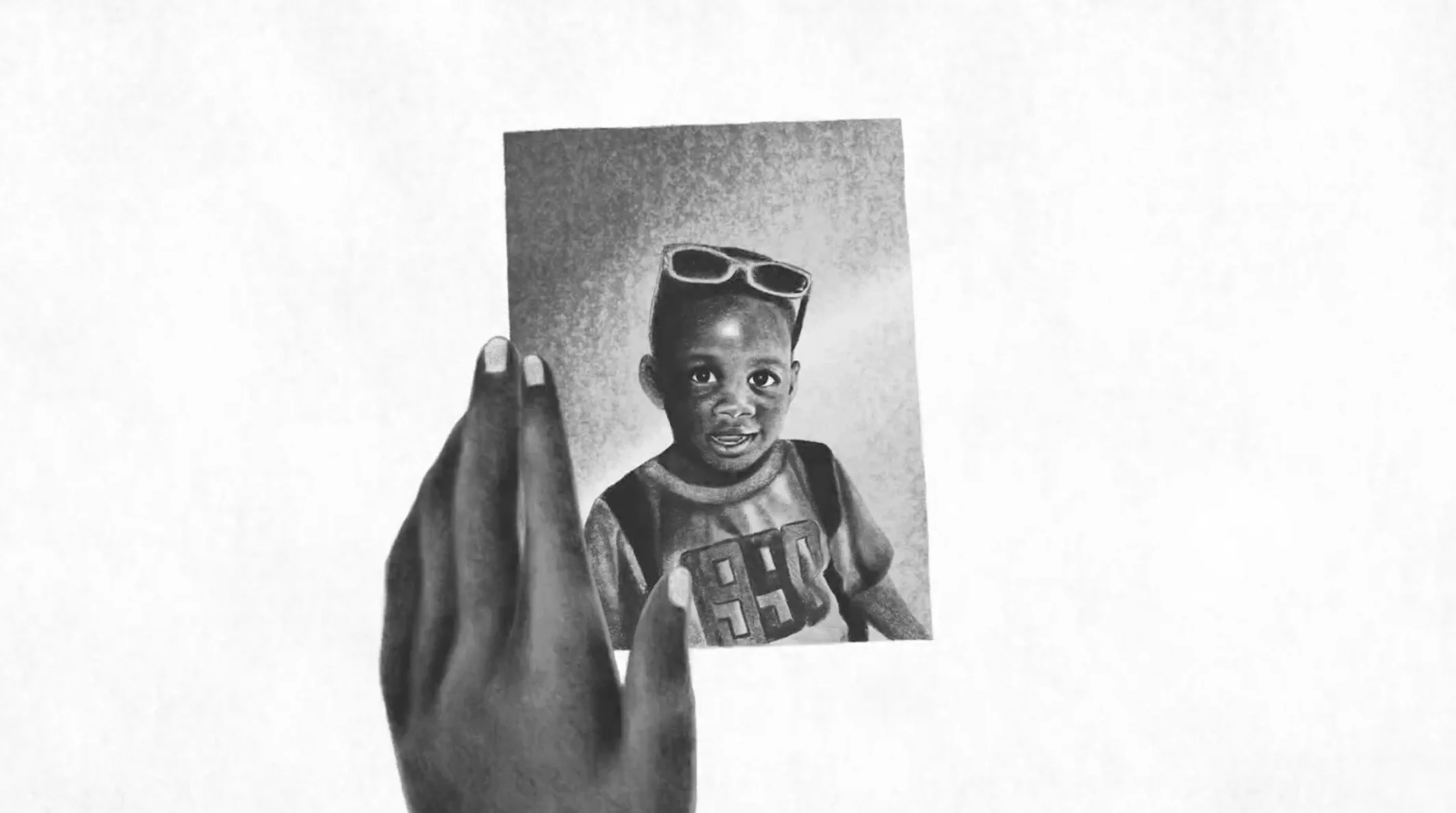Talking Heads: Interview with Paul Morstad
/Escaping the sun momentarily, I got to sit down with artist Paul Morstad over some refreshingly cold iced teas. During our interview, I learned about the word 'obfuscation' (which I still can’t spell properly), I learned that Morstad is an avid ornithologist, and I learned more about the use of his hidden maps. With his paintings seamlessly blending history and fantasy, his works are just that: magic rooted in realism. Each layer that unfolds tells a new story. Beautiful and otherworldly, his paintings and illustrations bring me back to the innocence of my childhood.
SAD Mag: How did you get involved with art?
Paul Morstad: I never really stopped. As a kid my parents always encouraged me to make art. Instead of sticking us in front of the TV, they forced us to make art. I got into high school and I realized that I should just stick with art, but I was also into the sciences like biology and zoology.
SM: Was it always painting?
PM: For the most part. I’ve also done work in sculpture and animation. After I graduated from Emily Carr I worked at the National Film Board in Montreal for about 10 years. I made a lot of short films which I directed myself. This stemmed from the animation classes I took at Emily Carr. Although my major was drawing, I was really seduced by animation at the time, so I went to as many classes as I could without being in the Animation Department. I needed a change in scenery after I graduated, so I moved to Montreal and got the gig at the National Film Board.
SM: So how did you go from animation to what you do now?
PM: They kind of crossed over. When I first started animation I took my paintings and turned them into film. The first film I did was called Whiskey Oblivion. I animated four of my paintings and turned them into life. Each painting was a kind of chapter in the film, even though it was only 30 seconds long.
SM: That’s interesting. When I look through your works, I find that there is an aspect of fantasy present.
PM: Yeah. I’m kind of into narrative, so it makes sense to work in animation. Animation also took form in my paintings, as I often made my paintings look like they were animated. That was an interesting branch to the sort of work I was doing at the time.
SM: There’s also an element of secrecy in your work as you continually play between concealing and revealing subject matter.
PM: I think it’s interesting to obscure things. We all have interests we don’t tell anybody or have dirty little secrets, so I kind of try to set up an interplay between the characters and the background and foreground through obfuscation. For instance, I do a lot of work on maps and by the time I’m finished a piece, huge sections of the map are obfuscated. But if you step back and see the painting from a wider distance you can see parts of the map that are hidden. There’s these old French paintings that are like optical illusions and they kind of flip flop because you see them one way and then you see them presented in another way. There’s a lot of tricks that I like to incorporate.
SM: How did you start using maps?
PM: It was funny actually. In 2003, my brother and I decided to paddle our canoe through Europe. We met up in Denmark and a friend of ours gave us a huge mahogany canoe. We paddled through Germany, Holland, Belgium, and finished off in France. We would’ve kept going but we couldn’t make it. Anyways, when I got home from that trip I had these nautical maps that we used to navigate those canals. I had used them everyday and they were quite precious to me. I laid it out on a piece of paper and thought, “Hey, I should paint on this thing!” I then realized I could paint on maps and use it as a narrative driver to the painting and add elements of the trip so that it [would act] as a story log.
SM: Does the location of a map dictate what you paint?
PM: It sure does. Sometimes I have a story and I find a map to fit it or vice versa. But quite often in my research on certain maps I’ll just discover some fascinating things about a certain place and create a narrative around that.
SM: Is your canoe trip part of the reason why water is often a motif in your works?
PM: Partly. I did other trips like that. I paddled from Montreal to New York City and that was a big inspirational trip for me too. I felt like an early pioneer paddling into New York.
SM: Do you ever tell your own story through the narrative?
PM: Yeah, I actually did a painting of my New York trip. It’s on a map of Manhattan and I often include the flora and fauna of the area, which is why I chose to paint skimmer birds. I saw them in the harbour right by the Statue of Liberty, so there are elements of the trip present in the painting.
SM: What made you start incorporating the local fauna and flora of a region?
PM: Remember how I mentioned I was into zoology and biology? Well I’m kind of a wannabe zoologist. Nature fascinates me; I used to say I was making new maps for the animals. I was taking the areas back for the animals and making new geographical charts. I like to talk about things like human detritus and the stuff humans leave lying around and how nature takes over again as humans vacate.
SM: What’s the importance of music in your work?
PM: Well I’m a musician; I play banjo and fiddle. I have a band called the Royal Coachmen, which plays old time Appalachian string band music. It’s a really specific folk music that is used for dances like square dancing and flat footing. I’m also really obsessed with musical instruments in general.
SM: Wow, you have very niche interests!
PM: I know. I get obsessed by the weirdest obscure things and I try to tell people and they are like, “Huh? What are you talking about?”
SM: But it’s interesting how well you incorporate all of your interests in each work.
PM: I guess I took some good advice that you should paint and draw what you know. There’s a lot of synergy present when you make art about your life, it resonates in your practise and all of the mundane things you bring to life have a sort of electricity. Rooting things in the mundane is a really important thing for me, because when you work with fantasy it’s really easy to fall into that genre. So when you do highly rendered illustrations that [are] very realistic, you’re almost at the edge of that boundary. I try to bring those elements out by making things banal.
SM: So you try to depict the ordinary?
PM: I like to find historical stories and I try to twist them into my own little narrative. I certainly have my favourite painters but the thing that moves me to make a painting often comes from literature. Authors like Haruki Murakami [have] a big influence on me. Murakami incorporates magic realism in his works, and that’s the closest [way] for me to describe my works to someone: magic rooted in realism.
All images courtesy of Paul Morstad. To find out more about the artist and his work, visit paulmorstad.com.
Talking Heads is an interview column devoted to contemporary arts and culture in Vancouver. Look out for more of Helen Wong’s interviews on sadmag.ca.









